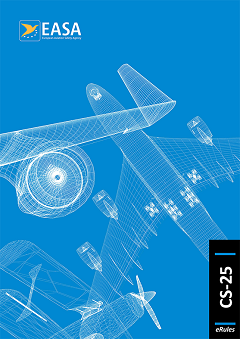CS 25.231 Longitudinal stability and control
ED Decision 2003/2/RM
(a) Aeroplanes may have no uncontrollable tendency to nose over in any reasonably expected operating condition or when rebound occurs during landing or take-off. In addition –
(1) Wheel brakes must operate smoothly and may not cause any undue tendency to nose over; and
(2) If a tail-wheel landing gear is used, it must be possible, during the take-off ground run on concrete, to maintain any attitude up to thrust line level, at 75% of VSR1.
CS 25.233 Directional stability and control
ED Decision 2003/2/RM
(a) There may be no uncontrollable ground-looping tendency in 90° cross winds, up to a wind velocity of 37 km/h (20 kt) or 0·2 VSR0, whichever is greater, except that the wind velocity need not exceed 46 km/h (25 kt) at any speed at which the aeroplane may be expected to be operated on the ground. This may be shown while establishing the 90° cross component of wind velocity required by CS 25.237.
(b) Aeroplanes must be satisfactorily controllable, without exceptional piloting skill or alertness, in power-off landings at normal landing speed, without using brakes or engine power to maintain a straight path. This may be shown during power-off landings made in conjunction with other tests.
(c) The aeroplane must have adequate directional control during taxying. This may be shown during taxying prior to take-offs made in conjunction with other tests.
ED Decision 2003/2/RM
The shock absorbing mechanism may not damage the structure of the aeroplane when the aeroplane is taxied on the roughest ground that may reasonably be expected in normal operation.
ED Decision 2015/008/R
(a) The following applies:
(1) A 90° cross component of wind velocity, demonstrated to be safe for take-off and landing, must be established for dry runways and must be at least 37 km/h (20 kt) or 0·2 VSR0, whichever is greater, except that it need not exceed 46 km/h (25 kt).
(2) The crosswind component for takeoff established without ice accretions is valid in icing conditions.
(3) The landing crosswind component must be established for:
(i) Non-icing conditions, and
(ii) Icing conditions with the most critical of the landing ice accretion(s) defined in appendix C and O, as applicable, in accordance with CS 25.21(g).
[Amdt 25/3]
[Amdt 25/16]
